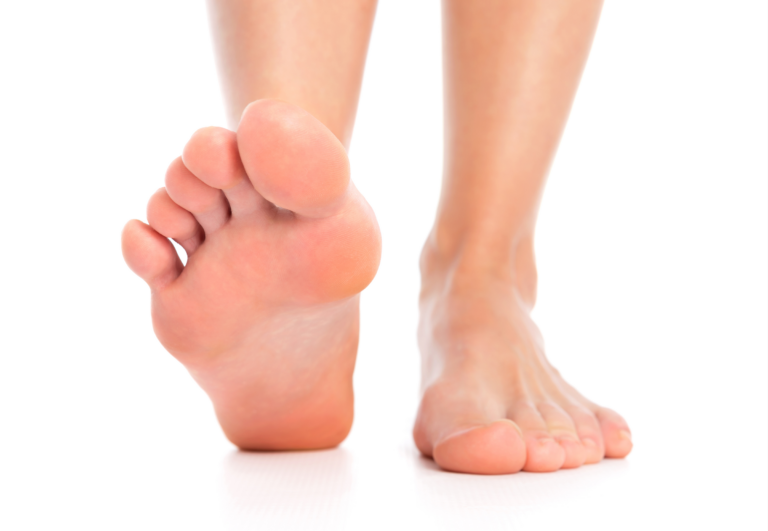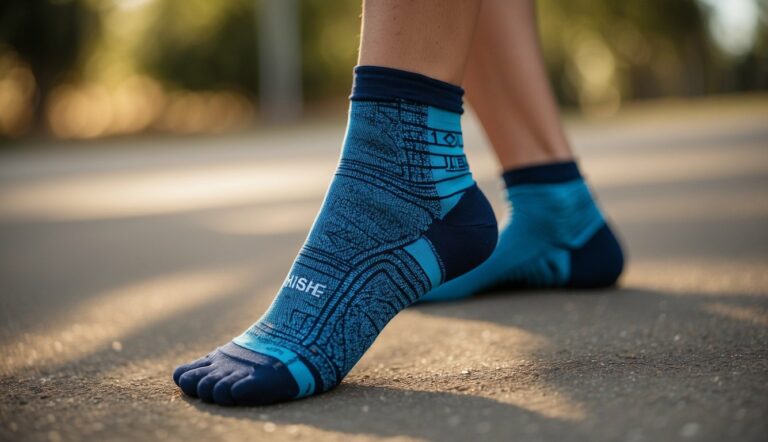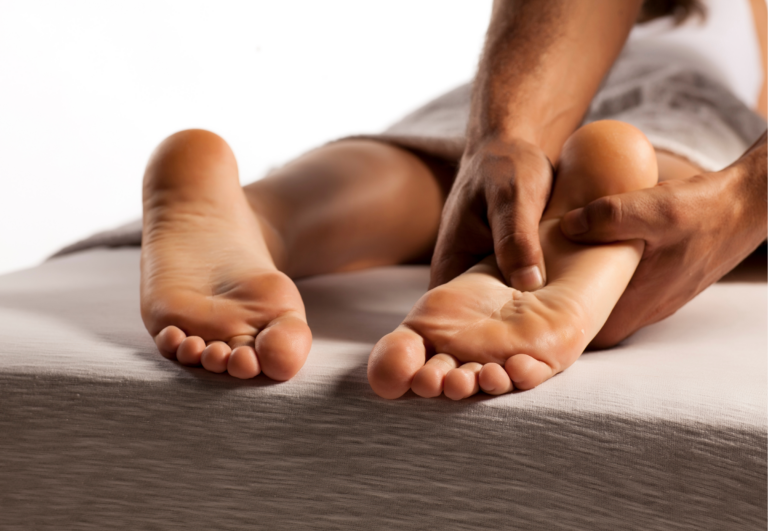Step-by-Step Guide to Wearing Toe Spacers: A Simple How-To
Toe spacers are simple yet effective tools designed to improve foot health by realigning the toes to their natural position. From easing the discomfort caused by bunions and overlapping toes to enhancing balance and promoting better foot strength, these small devices play a significant role in maintaining the wellbeing of our feet. Wearing toe spacers can be particularly beneficial for those who spend long hours on their feet or regularly wear tight-fitting shoes, which often contribute to toe deformities and discomfort.
Using toe spacers is straightforward, but like any health tool, there’s a right way to do it. My experience with toe spacers has taught me that ensuring a proper fit and gradually increasing wear time is key to reaping the maximum benefits without causing additional issues. These devices come in various sizes and materials, and selecting the right one for your specific need is the first step towards healthier feet. Remember, while toe spacers can offer relief and support for many foot-related concerns, they’re not a cure-all and should be used as part of a comprehensive approach to foot health.
Step-by-Step Guide to Wearing Toe Spacers
When using toe spacers, it’s important to follow a step-by-step guide to ensure comfort and effectiveness.
Here’s a concise guide:
- Choose the Right Size: Toe spacers come in various sizes. Make sure to select a size that fits comfortably between your toes without causing pain or discomfort.
- Clean Your Feet: Start with clean, dry feet to prevent any slipping or skin irritation.
- Insert Gently: Place the toe spacers between each toe, starting either from the big toe and working your way out, or from the smallest toe inward. Ensure that the spacers fit snugly but do not force them into place.
- Wear for Short Periods: Initially, wear the toe spacers for short durations, such as 10-15 minutes, to allow your feet to adjust. Most manufacturers recommend starting slow by wearing the silicone stretcher for no more than 5-15 minutes a day and gradually increasing the time.
- Increase Duration Gradually: As your feet become accustomed to the spacers, gradually increase the time you wear them. This could mean wearing them for longer periods while at home or during certain activities as recommended by the product guidelines.
- Monitor Your Feet: Pay attention to any signs of discomfort or pain. Toe spacers should not cause pain. If you experience any adverse effects, reduce the wearing time or consult with a professional.
- Clean the Spacers: After use, clean the toe spacers according to the manufacturer’s instructions to maintain hygiene.
- Consistency: For best results, use the toe spacers regularly as part of your foot care routine.
Remember to read and follow the specific instructions provided with your toe spacers, as different brands and models may have unique recommendations or guidelines.
Wearing Toe Spacers – A Quick Overview
Toe spacers are simple yet effective tools I often recommend for maintaining proper toe alignment, which is essential for balanced foot health. They come in various types, are made from comfortable materials, and can help alleviate common foot ailments when chosen and used appropriately.
Types and Materials
Toe spacers are made from materials such as gel, silicone, and foam. Gel spacers provide a soft, cushioning effect that molds to the shape of your toes, offering comfort and a custom fit. Silicone toe spacers are durable and can be reused and cleaned easily.
Foam spacers are lightweight and often preferred when a less rigid support is desired. Each type provides different levels of flexibility and support, catering to varied needs.
Benefits for Foot Health
Using toe spacers can lead to significant benefits, including better alignment and stability in the feet. They help in separating toes that may be crowded or overlapping, a common issue that can lead to bunions and hammertoes.
They also improve circulation, which is crucial for overall foot health. For those who suffer from conditions like plantar fasciitis, toe spacers may serve to alleviate pain by promoting a more natural foot posture.
Selecting the Right Toe Spacers
When choosing toe spacers, it’s essential to find the right size and fit for maximum efficacy and comfort. Factors such as the level of toe separation needed, material preference, and whether you will wear the spacers inside shoes, can all influence your choice. Smaller spacers generally offer mild separation, ideal for beginners, while larger ones provide greater alignment and are suitable for more severe cases of toe deformities.
By considering the type of material, health benefits, and specific foot condition, you can select the toe spacers that best suit your needs for comfort and therapeutic value.
Preparation and Fitting
Preparing and fitting toe spacers properly is crucial for maximized benefits and avoidance of discomfort. It’s vital to select the right size and maintain high hygiene standards to ensure comfortable wear and foot health.
Proper Sizing and Fit
When choosing toe spacers, sizing is paramount. Poorly sized spacers can lead to discomfort or even foot problems. Measure your feet carefully, or better yet, consult with a specialist to find your proper size. Here’s a basic guide to ensure a good fit:
- Measure the width of your foot at the broadest point.
- Compare this measurement to the sizing chart provided by the toe spacer manufacturer.
- The spacer should feel snug but not tight, allowing for a comfortable wear without restricting blood flow.
Remember, a perfect fit is one where the toe spacers sit between each toe comfortably, encouraging natural alignment without causing any pain or pressure.

Hygiene Considerations
Hygiene is as important as sizing for the health and longevity of both your toe spacers and feet. Here are essential cleanliness tips:
- Before and after wearing toe spacers, wash your feet to prevent bacterial buildup.
- Regularly clean your toe spacers according to the manufacturer’s instructions, which usually involve soap and water.
- Allow the spacers to air dry completely before their next use to prevent any moisture-related issues.
Following these steps will help maintain the cleanliness of the toe spacers and contribute to better overall foot care.
Optimal Usage
To achieve the best results with toe spacers, it’s critical to follow a structured wearing schedule and integrate them smoothly into your daily routine. This ensures comfort and gradual adaptation while promoting flexibility and mobility in your feet.
Wearing Schedule
When you first start using toe spacers, begin with short periods—I recommend about 15-30 minutes per day. Gradually increase this time as your feet adjust to avoid any unnecessary discomfort. Here’s a simple weekly timeline I’ve found effective:
- Week 1: 15-30 minutes daily
- Week 2: 30-60 minutes daily
- Week 3: Continuous use for a few hours, or throughout an activity such as watching TV or reading
Remember to listen to your body; if you experience pain or significant discomfort, reduce the usage time and consult with a professional if it persists.
Incorporating into Daily Routine
In my experience, making toe spacers a part of my daily life has been beneficial for pain relief and managing foot problems. To do this effectively:
- Use While at Rest: Slip on toe spacers during downtime at home.
- Pair With Foot Exercises: Perform gentle foot exercises while wearing them to enhance mobility.
- Prep for Activity: Before doing activities that strain your feet, such as hiking or long walks, use toe spacers for a few minutes to encourage proper foot movement.
Always prioritize your comfort and gradually allow your feet to adapt to the sensation and alignment that toe spacers provide.
Toe Spacer Maintenance
Maintaining your toe spacers is crucial to ensure they provide the ideal benefits and to prolong their lifespan. Regular cleaning is essential for hygiene and to prevent the buildup of any unpleasant odors or bacteria.
Cleaning and Care
I always recommend using mild soap and warm water to cleanse toe spacers, ensuring they stay free of dirt and bacteria. It’s best to wash them by hand, as this is gentler on the material:
- Rinse spacers under warm water to remove any initial debris.
- Apply a small amount of soap to each spacer.
- Thoroughly clean the spacers, being sure to reach into any crevices.
- Rinse again, ensuring all soap residue is gone.
Air drying toe spacers is optimal; lay them out on a clean towel in a well-ventilated area. Avoid exposing them to direct heat or sunlight, as this could degrade the material.
When to Replace
Toe spacers can wear out with time, depending on their material and the frequency of use. Here’s a simple checklist to help determine if it’s time for a new pair:
- Signs of Wear: Check for thinning, tears, or permanent deformation.
- Loss of Functionality: If they no longer maintain proper toe separation, they should be replaced.
- Material Breakdown: Spacers made of silicone or gel can become sticky or brittle.
Inspect your spacers monthly, replacing them as needed to preserve foot health and spacer effectiveness. Remember, longevity varies with quality and care, so investing in a good pair and maintaining them well will serve your feet best in the long run.
Addressing Common Concerns
When incorporating toe spacers into your daily routine, it’s essential to understand how they interact with your footwear and to address questions or issues that may arise during their use.
Toe Spacers and Footwear
Footwear Compatibility: Toe spacers are designed to work with footwear that has a wide toe box to allow adequate room for the spacers and your toes. Shoes with narrow toe boxes or high heels may not be suitable, as they can counteract the benefits of the spacers by squeezing the toes back into an unnatural position.
Socks and Orthotics: It’s usually possible to wear socks with toe spacers. Opt for ones with ample stretch. If you use orthotics, check with the provider to ensure compatibility with toe spacers, as some adjustments might be necessary for a proper fit.
FAQs and Troubleshooting
Side Effects: While toe spacers are generally safe, you may experience some discomfort initially, which should resolve as your feet adjust.
- Discomfort in Shoes: If toe spacers cause discomfort in certain shoes, it may indicate that the footwear is too tight or not properly accommodating the spacers.
Contraindications: Not everyone should use toe spacers. If you have certain foot deformities or circulatory issues, it’s best to consult a healthcare professional before use.
- Troubleshooting Fit: If toe spacers feel too tight or loose, most can be trimmed for a better fit or you can seek different sizes or materials to suit your needs.
Through proper selection and troubleshooting, toe spacers can be a beneficial addition to your foot care regimen.





